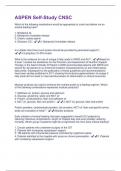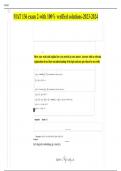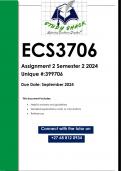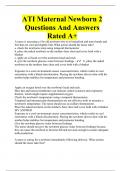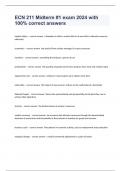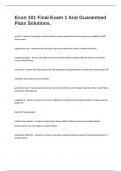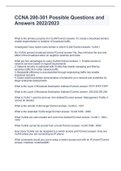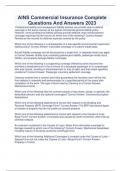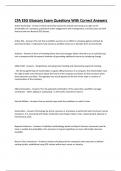Exam (elaborations)
ASPEN Self-Study CNSC Questions And Answers Graded A+
- Course
- Institution
Which of the following medications would be appropriate to crush and deliver via an enteral feeding tube? 1. Nifedipine XL 2. Metoprolol immediate release 3. Enteric coated aspirin 4. Diltiazem CD - ️️2. Metoprolol immediate release In a stable infant how much protein should be provided b...
[Show more]
